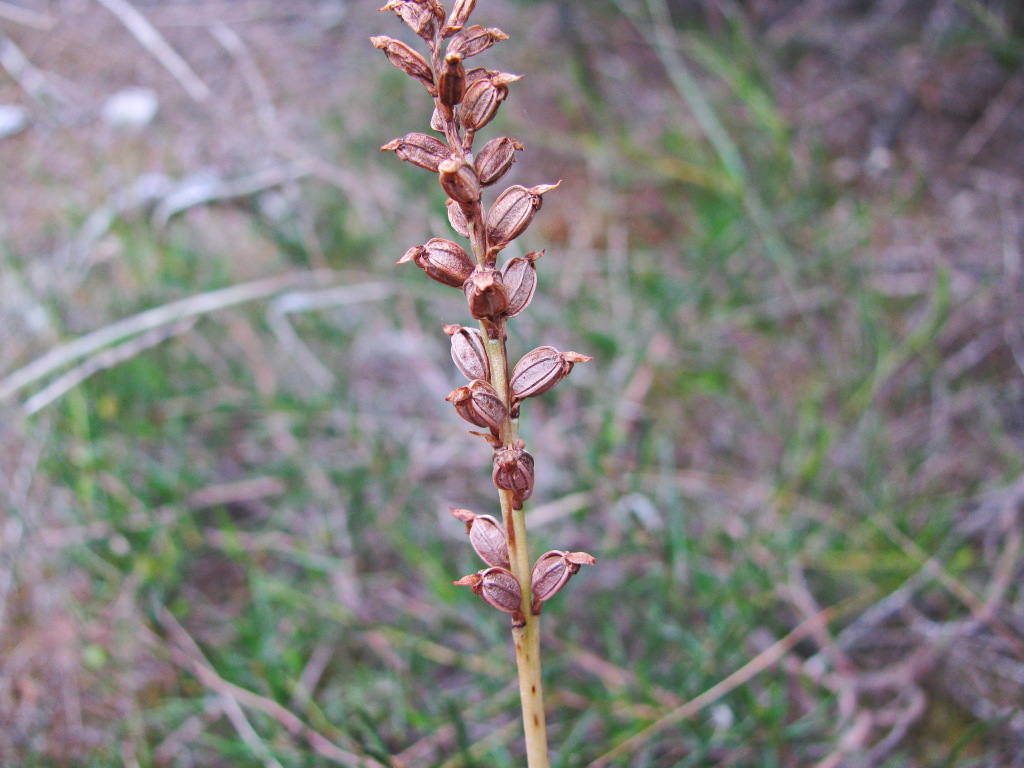Microtis arenaria
LindlFlowering stem 30–60 cm tall. Leaf more or less erect, to 30–80 cm long, hollow; sheath opening well below inflorescence. Flowers 10–60, pale green or yellow-green, fragrant, in a fairly dense spike-like raceme 3–15 cm long; ovary ovoid to sub-cylindric, 4–10 mm long, almost sessile, standing out from stem; dorsal sepal ovate, 3–4 mm long, shallowly hooded, margin evenly rounded, apex acute to acuminate, upturned; lateral sepals linear-oblong, shorter than dorsal sepal, recurved to revolute; petals lanceolate and sickle-shaped, shorter than dorsal sepal, partly concealed by dorsal sepal. Labellum pendulous (but not pressed against ovary), oblong, 3–4 mm long; margins scalloped, apex distinctly bilobed, the lobes rounded or angular with a distinct, decurved point between them; lamina with saddle-shaped basal calli and irregularly shaped apical callus (often with a decurved apex). Column with distinct ovate auricles. Flowers Sep.–Dec.
MuM, Wim, GleP, Brid, VVP, VRiv, GipP, OtP, WaP, Gold, CVU, GGr, DunT, NIS, EGL, EGU, HSF, HNF, OtR, Strz, MonT. Also SA, NSW, Tas. Occurs in a wide variety of habitats from coastal sandhills, heathland, woodland to forest and rocky outcrops inland.
This is the largest of the Victorian Microtis species, and a very variable one. Hybrids with related species have been reported.
Plants with affinities to M. arenaria, but more similar to the South Australian M. frutetorum Schdl., grow in burnt open-forest. They have large flowers which are strongly perfumed, a large ovary, a long, flat, acute dorsal sepal and a long straight labellum pressed against the ovary and with a bifid tip.
Entwisle, T.J.; Bates, R.J. (1994). Microtis. In: Walsh, N.G.; Entwisle, T.J., Flora of Victoria Vol. 2, Ferns and Allied Plants, Conifers and Monocotyledons, pp. 865–868. Inkata Press, Melbourne.
 Spinning
Spinning

